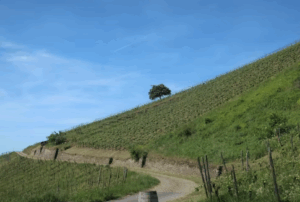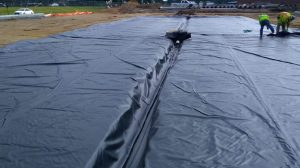Canal Lining: Enhancing Water Management with Ocean Non Wovens Geotextile
Effective water management is a critical aspect of sustainable agriculture, urban planning, and environmental conservation. In regions like Champaran, Bihar, where water resources are crucial for both agriculture and daily living, canal lining projects play a pivotal role in improving water efficiency and minimizing losses. This case study delves into the successful implementation of a canal lining project using Ocean Non Woven Geotextile 520 GSM, highlighting the technical details, benefits, and unique aspects of geotextile usage that often go unmentioned.
Table of Contents
The Need for Canal Lining
Canals are essential infrastructures for transporting water from reservoirs to fields and urban areas. However, unlined canals suffer from significant water losses due to seepage, evaporation, and weed growth. According to a study by the Central Water Commission of India, unlined canals can lose up to 50% of their water before it reaches the intended destination . This inefficiency not only leads to water wastage but also affects the agricultural productivity and water availability for local communities.
Project Overview: Champaran Canal Lining
The Champaran canal lining project aimed to mitigate water loss and improve the overall efficiency of water delivery. Ocean Non Wovens was selected to supply 50,000 square meters of our 520 GSM geotextile for this endeavor. The choice of material was based on its superior properties, including high tensile strength, durability, and permeability.
Location: Champaran, Bihar
Product Used: Ocean Non Woven Geotextile 520 GSM
Quantity: 50,000 sqm
Why Ocean Non Woven Geotextile?
Our geotextile is specifically designed for applications requiring robust and reliable performance. The 520 GSM variant offers the following benefits:
- High Tensile Strength: Ensures the structural integrity of the canal lining, preventing tears and ruptures.
- Durability: Resistant to environmental degradation, UV rays, and chemicals, ensuring a long service life.
- Permeability: Allows water to pass through while preventing soil erosion and weed growth.
- Ease of Installation: Lightweight and flexible, making it easy to handle and install, even in challenging terrains.
Technical Implementation
The installation process in Champaran involved several key steps:
- Site Preparation: The canal bed was cleaned and graded to provide a smooth surface for the geotextile.
- Geotextile Placement: Ocean Non Woven Geotextile was laid out in sections, with overlaps to ensure continuity. This step was crucial for preventing seepage through the joints.
- Anchoring: The edges of the geotextile were securely anchored to prevent displacement due to water flow.
- Backfilling: A layer of soil and aggregates was placed over the geotextile to protect it from mechanical damage and UV exposure.
This method ensured that the canal lining was both effective and durable, significantly reducing water loss and maintenance requirements.
Benefits of Geotextile in Canal Lining
The use of Ocean Non Woven Geotextile 520 GSM in the Champaran project resulted in several benefits:
- Reduced Water Loss: The impermeable nature of the geotextile minimized seepage, ensuring more water reached the end-users.
- Improved Water Quality: By preventing soil erosion, the geotextile helped maintain the clarity and quality of the canal water.
- Cost Efficiency: The long lifespan and low maintenance requirements of the geotextile reduced the overall cost of the project.
- Environmental Protection: Limiting soil erosion and weed growth helped preserve the surrounding ecosystem.
Unspoken Advantages
While many companies highlight the primary benefits of geotextile in canal lining, several crucial advantages are often overlooked:
- Versatility: Geotextiles are adaptable to various environmental conditions and can be used in diverse applications beyond canal lining, such as road construction and landfill protection.
- Sustainability: Geotextiles contribute to sustainable development by conserving water, reducing soil erosion, and enhancing the longevity of infrastructure projects.
- Local Economic Impact: Projects like the Champaran canal lining create local job opportunities, boosting the economy and improving the standard of living in rural areas.
Conclusion: Ocean Non Wovens – Your Partner in Sustainable Water Management
The Champaran canal lining project stands as a testament to the effectiveness and reliability of Ocean Non Woven Geotextile 520 GSM. By significantly reducing water loss and improving water management, our geotextile has proven to be a vital component in enhancing agricultural productivity and sustainability.
At Ocean Non Wovens, we are committed to providing high-quality geosynthetics tailored to meet the unique needs of each project. Whether you are looking to improve water management, protect infrastructure, or undertake any other geotechnical application, our products are designed to deliver superior performance and long-lasting benefits.
Choose Ocean Non Wovens for your next project and experience the difference that quality and expertise can make. Contact us today to learn more about our comprehensive range of geotextile solutions and how we can help you achieve your project goals.
References:
- Central Water Commission of India. (Year). Report on Water Losses in Canals. Retrieved from [link].



